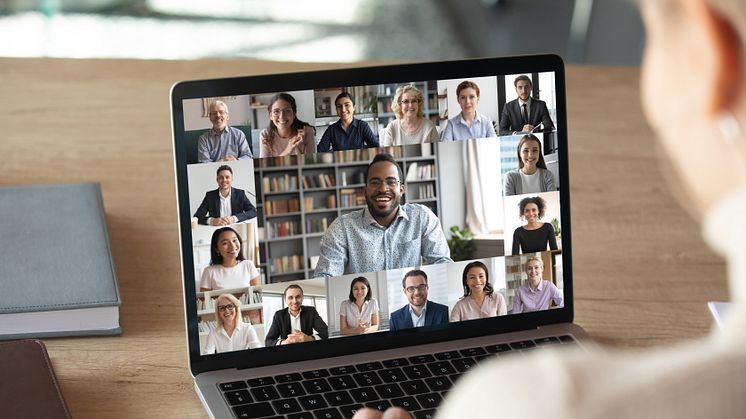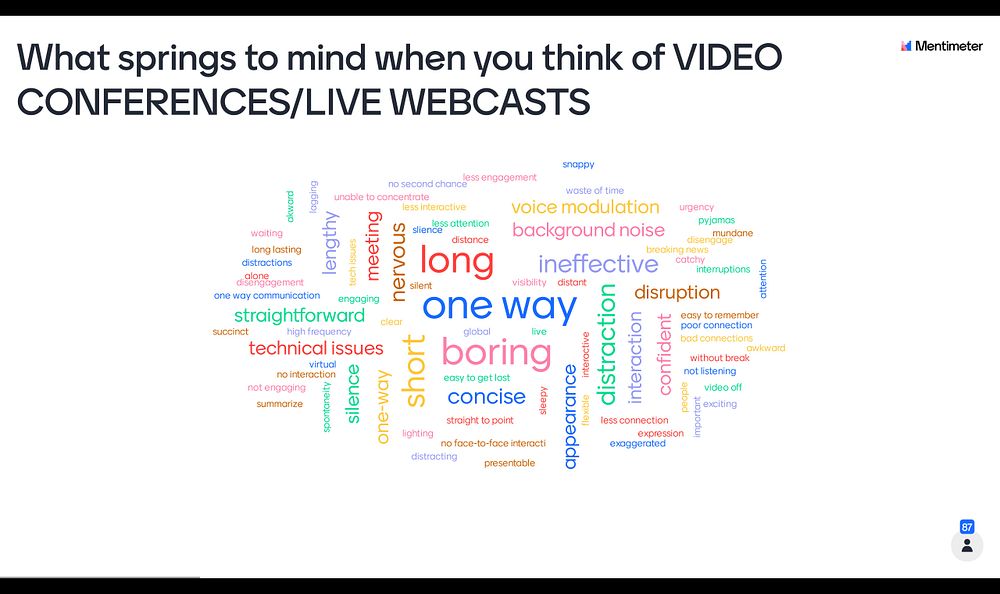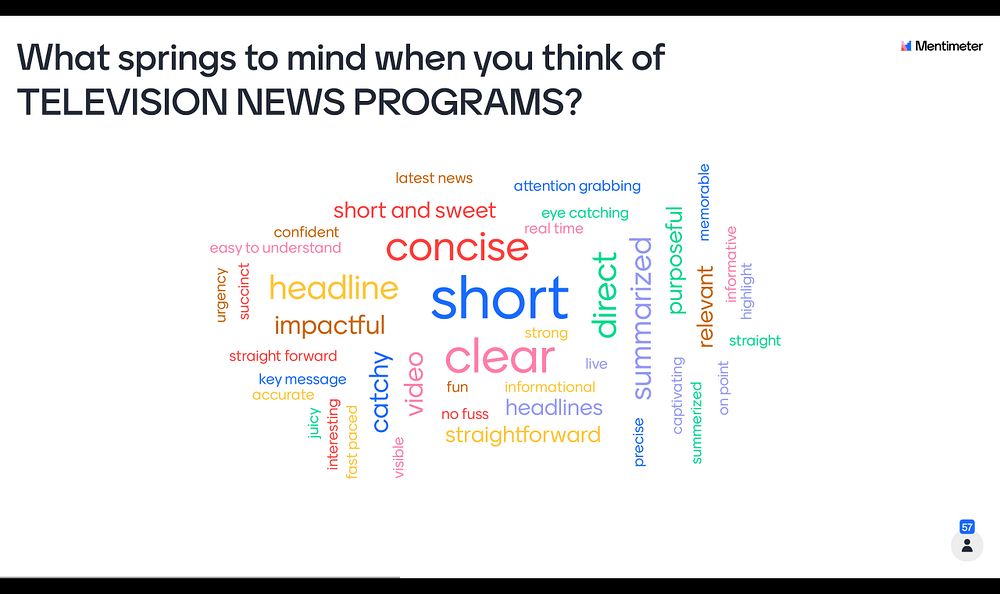
Blog post -
How to apply the principles of TV news presentation to make video conferences engaging and productive
It’s time to get serious about how you appear in video conferences and live webcasts.
They’re here to stay, even after COVID-related lockdowns end – yet I’m still hearing them described as boring, disengaged, ineffective and waste of time. Phrases like “screen fatigue”, “technical difficulties” and “you’re on mute” have entered our global consciousness.
You can see these phrases again and again during our workshop TV Presenter Essentials for Anchoring Live Webcasts and Video Conferences, in which we coach participants how to present video conferences and live webcasts like a TV anchor.
This is how participants usually describe live webcasts:

But when I ask them how they would describe television news programs, I get responses like these:

It follows that in order to hold your audience’s attention you must use the techniques of professional television anchors to engage your audience and get your message across.
These broadly fall into three categories:
- Urgency – TV news is, by definition, urgent and important. If your video conference or live webcast doesn’t bring these traits across your webcast will naturally be boring and forgettable.
- Companionship – There is a good reason why TV anchors are household names. Viewers identify with them on a very personal level. If you don’t foster a similar emotional connection, your audience will tune out and multitask without feeling guilty in the slightest.
- Entertainment – It’s clear you don’t hear scripted jokes in TV news bulletins, but sport, weather and human interest stories provide a contrast to the heavy news and current affairs, and allow viewers to come up for air. Your live webcast ought to have similar elements of light and shade.
We have seen so much interest in our course that we now offer it online on Udemy, including for companies with a Udemy for Business subscription, and the HBM Online Academy.
We cover everything from presentation techniques, program flow and how to bridge technical difficulties, to setting up your home studio, choosing the best background and interactivity portal, and managing Q&A - 18 topics in all.
As an added bonus, you are welcome to send me a link to your own live webcast or video conference for review. You may also choose to come to our TV studios in Singapore or Kuala Lumpur, schedule a 1:1 session via Microsoft Teams, Zoom or BlueJeans for practise.
Drop me a note for further details.
